
Bref historique du CIEMI
L’expérience scalabrinienne
Le ciemi doit son existence à un ordre religieux catholique consacré depuis 1887 au service des migrants dans le monde, à savoir les Missionnaires de Saint Charles Borromée–Scalabriniens. Son fondateur, Mgr Jean-Baptiste Scalabrini (1839-1905), évêque de Plaisance (Italie), fut au XIXe siècle l’une des figures principales du « catholicisme social » italien et un précurseur de la sollicitude de l’Église catholique en faveur des migrants.
Pendant près de quatre-vingt-dix ans les Scalabriniens ont dirigé leur mission en direction de la diaspora italienne disséminée sur les cinq continents, tout en aidant ponctuellement des exilés d’autres nationalités.
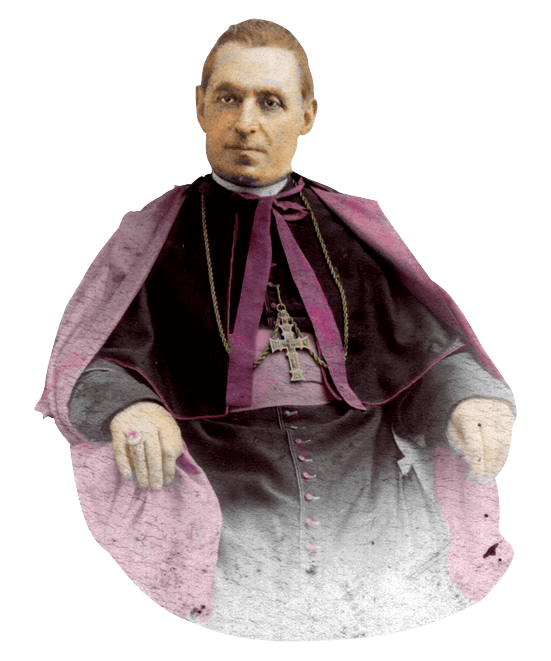
En 1949, ils prirent la direction à Rome d’un Collège pontifical pour l’émigration destiné à former les prêtres italiens souhaitant assister leurs concitoyens à l’étranger. Au cours des années 1950 et 1960, grâce aux études menées dans ce Collège, la Congrégation, une fois devenue autonome après une période de gestion directe de la part du Vatican, a réfléchi sur son identité, sur la complexité du phénomène migratoire et sur les meilleurs outils pour l’aborder. En 1963, au sein dudit Collège, les missionnaires créèrent un Centre d’études sur l’émigration dans le but d’« étudier les problèmes historiques, sociologiques et pastoraux des migrations ». Ce fut le début d’une nouvelle manière de concevoir l’œuvre missionnaire auprès des migrants, en combinant action pastorale et éclairage de la réflexion scientifique.
Ce nouveau modèle d’action fut rapidement exporté. C’est ainsi que le Center for Migration Studies vit le jour à New York en 1966 ; puis que fut créé le Centro de estudos migratorios à São Paulo en 1970, suivi par deux autres structures analogues à Porto Alegre et à Bâle en 1973. Entre-temps, durant le chapitre général de 1969-1972, les Scalabriniens décidèrent d’abolir dans leur constitution toute référence à une nationalité particulière de migrants, pour se consacrer à toute personne « qui vit en dehors de sa patrie ou de son environnement social et culturel d’origine, et qui, pour de vraies nécessités, a besoin d’une action missionnaire spécifique ».
.
La fondation du ciemi (1974-1977)
Parmi les initiateurs du premier centre d’études scalabrinien figure le père Antonio Perotti (1927-2004), futur fondateur du ciemi. Auteur de deux thèses de doctorat, l’une portant sur l’attitude des syndicats américains à l’égard des travailleurs étrangers (université de Rome) et l’autre sur les répercussions du nouveau marché européen sur l’émigration italienne (université de Louvain), Antonio Perotti plaide au sein de sa Congrégation en faveur d’une utilisation plus marquée des outils fournis par les sciences humaines et d’un plus grand investissement dans la pastorale du monde ouvrier. Durant et juste après les trente glorieuses, la difficile condition des travailleurs dans les usines est telle que la question ouvrière semble être un sujet aussi central et débattu qu’au XIXe siècle. Dans le milieu ecclésial, les ouvriers, dont beaucoup d’immigrés, sont ainsi considérés comme les « vrais pauvres », qui échappent à la sollicitude de l’Église, perçue comme éloignée de leurs préoccupations.
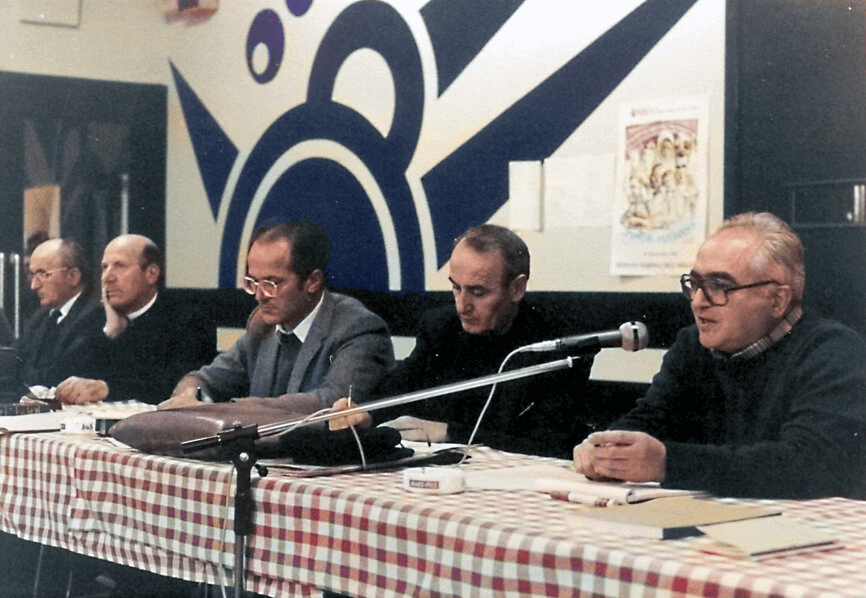
En 1973, Giovanni Battista Sacchetti, confrère et ami d’Antonio Perotti, constatant que le Centre d’études sur l’émigration (cser) qu’il dirige à Rome est géographiquement trop éloigné des institutions des communautés européennes, envisage de constituer une antenne du cser à Paris, en la rattachant à l’une des missions scalabriniennes présentes sur place. Ses arguments se situent dans la droite ligne des considérations qu’Antonio Perotti fera siennes : Paris est un lieu hautement stratégique à la fois dans le monde des migrations et pour l’avenir de l’Église. La ville accueille le siège d’importants organismes internationaux (unesco, ocde, etc.), compte des organisations syndicales très actives sur le terrain en faveur des immigrés et abrite des exemples phares de pastorales ouvrières, qui assistent les travailleurs immigrés, catholiques comme musulmans.
En 1974, au terme de son mandat de conseiller général à la direction de son ordre, Antonio Perotti obtient de pouvoir être assigné à la région parisienne afin de réaliser le projet du père Sacchetti. Le nouveau centre d’études s’appuiera sur le Centre de Documentation Migrations que Louis Taravella, scalabrinien, a déjà commencé à constituer à Paris et qui sera plus tard intégré au futur ciemi.
Antonio Perotti parvient, non sans rencontrer quelques résistances parmi ses confrères en France, à créer en deux ans, dans les locaux de la Mission catholique italienne sise au 46, rue de Montreuil, le Centre d’information et d’études sur les migrations méditerranéennes (ciemm). Les textes rédigés peu avant la déclaration officielle de l’association à la Préfecture, le 6 avril 1977, montrent la détermination d’Antonio Perotti à mettre en œuvre sa vision de ce que devrait être ce nouvel organisme, à savoir un établissement laïc, indépendant et autonome de la Congrégation scalabrinienne. Dès que le Centre est juridiquement constitué en association, son directeur s’engage donc à en respecter les statuts, tout en privilégiant une typologie d’adhérents et de personnels (salariés et bénévoles) la plus représentative possible du monde des migrations et de la classe ouvrière. Il s’entoure alors de religieux non scalabriniens, d’anciens réfugiés, d’immigrés et d’autochtones, et ce faisant, rassemble différentes sensibilités religieuses (catholiques, protestants, musulmans, athées).
L’époque d’Antonio Perotti (1977-1993)
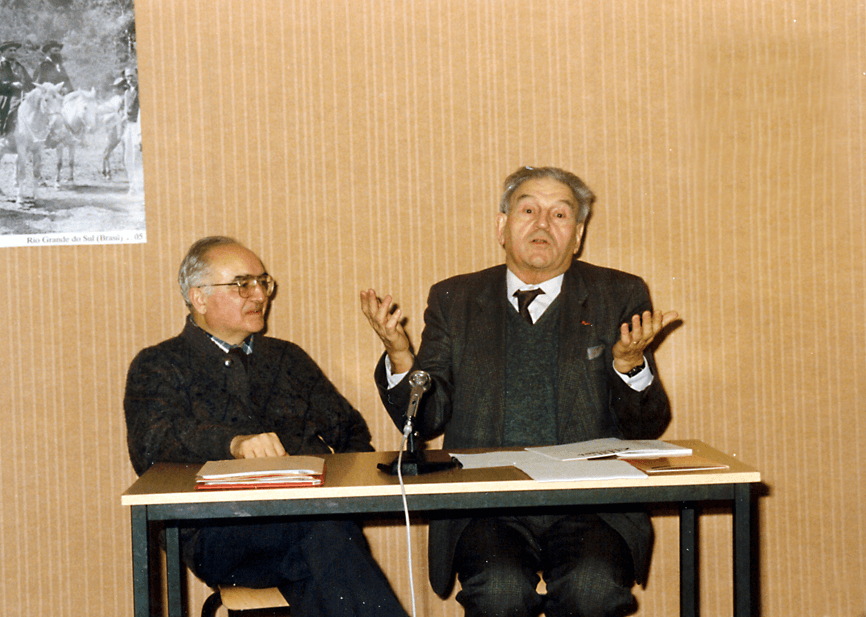
Le 5 avril 1977, la première Assemblée générale de l’association se réunit pour approuver ses statuts. Louis Taravella est nommé président, Mgr Bernard Guillard (secrétaire de la Commission épiscopale) vice-président, le père Mario Zonta, trésorier et sœur France Thépaut (de la Communauté des Filles du Saint-Esprit), secrétaire. Initialement dénommé ciemm, l’organisme sera plus tard rebaptisé Centre d’information et d’études sur les migrations (ciem) avant de devenir définitivement en 1985 le Centre d’information et d’études sur les migrations internationales. En 1978, la Direction provinciale des Scalabriniens met à la disposition de l’association cinq locaux situés au rez-de-chaussée du 46, rue de Montreuil, anciennement affectés à l’imprimerie du journal l’Eco d’Italia. Dans le but d’impliquer dans une sorte d’alliance commune en faveur de la cause migratoire le plus grand nombre d’acteurs de la société civile, le 6 décembre 1979 l’Assemblée générale de l’association décide de confier la présidence du ciemi à Philippe Farine, ancien président du Comité catholique contre la faim et pour le développement (ccfd) et membre éminent du parti socialiste, œuvrant pour l’intégration des immigrés en France.
Antonio Perotti dirige l’association jusqu’en 1993. Plusieurs aspects caractérisent cette période : a) l’effort d’immersion dans le milieu ecclésial et associatif parisien et français, qui se reflète dans la composition même du personnel du Centre ; b) la volonté de médiation entre les mondes religieux et laïc, chrétien et musulman, associatif et académique, scalabrinien et non scalabrinien ; c) la multiplication des activités et des ressources humaines nécessaires à la réalisation de ces dernières ; d) les difficultés administratives et financières.
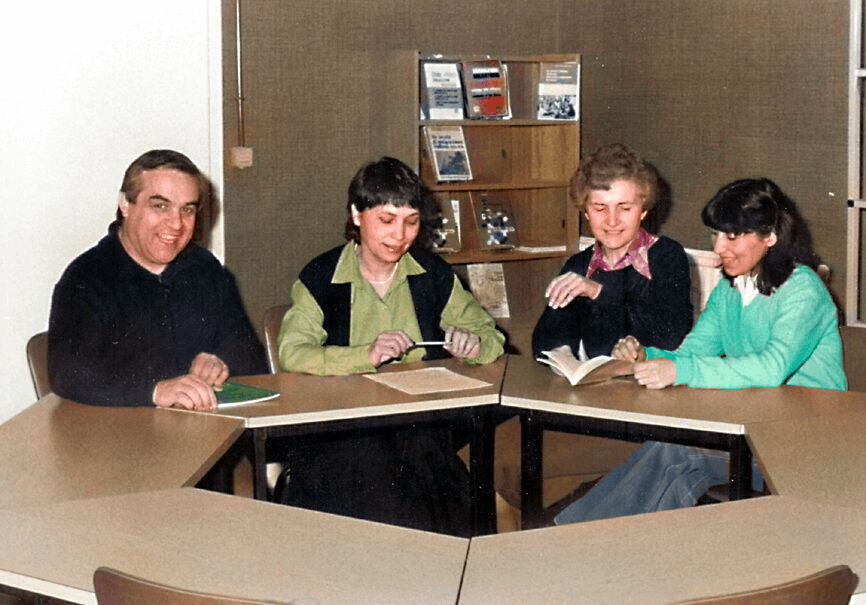
Tandis que le secteur documentation se développe et s’enrichit, les pôles formation et édition intensifient leurs activités. Le père Perotti soutient et aide de nombreux jeunes, notamment immigrés, intéressés par la recherche et le militantisme et, parallèlement, se montre disponible et généreux vis-à-vis des associations actives à cette époque. Il intervient comme expert auprès d’instances ecclésiales, enseigne ponctuellement dans les universités, siège dans les conseils d’administration d’associations et d’organismes publics, participe en tant que représentant du Saint-Siège aux travaux que le Conseil de l’Europe mène alors sur les migrations, anime des colloques nationaux et internationaux, etc. Ses préoccupations et ses centres d’intérêt sont multiples : l’interculturel, l’influence des médias sur l’opinion publique, l’associationnisme maghrébin, l’intégration, etc.
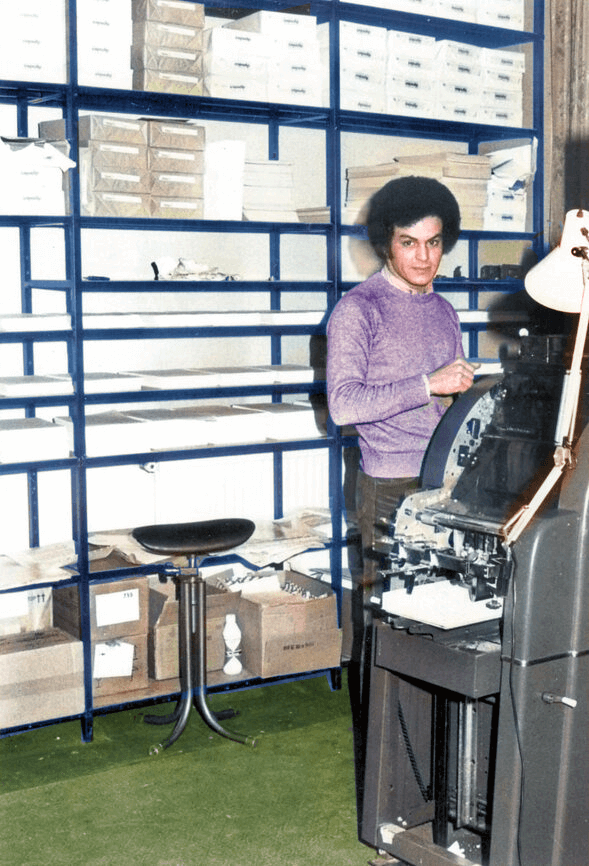
Dans sa vision stratégique, il est essentiel que les principales structures dédiées aux travailleurs immigrés se fédèrent et collaborent plus étroitement. En conséquence, elles doivent se regrouper géographiquement, partager des services (d’où l’idée d’une « imprimerie associative commune »), créer des coordinations ad hoc pour plaider les causes les plus importantes. Selon lui, ce tissu associatif a besoin du concours de la recherche scientifique, ce qui conduit le ciemi à nouer des liens étroits avec le monde universitaire et à lancer, en 1984, deux collections d’ouvrages en coédition avec les Éditions L’Harmattan : « Migrations et changements » (57 titres jusqu’en 2000) et « Recherches universitaires et migrations » (12 titres jusqu’en 1995).

À la fin des années 1980, impliqué sur plusieurs fronts, le ciemi commence à ressentir le poids de la lourde charge de ses engagements éditoriaux (collections de livres, bulletins, périodiques, manuels, etc.) et de ses multiples initiatives. Les finances font défaut, et le personnel, pourtant relativement nombreux, ne parvient plus à suivre toutes les activités. Parallèlement, le directeur ayant au fil du temps généreusement accordé des locaux aux associations ne disposant pas de siège propre, le Centre se retrouve de plus en plus confiné dans des espaces exigus, qui entravent ses perspectives de développement.
Entre 1989 et 1999, parfois plus par nécessité que pour répondre à des projets spécifiques, le ciemi doit fusionner des secteurs, diminuer ses coûts et récupérer des locaux. Les différentes publications produites par le Centre sont fondues dans la nouvelle revue scientifique Migrations Société, dont le premier numéro voit le jour en février 1989, d’abord sous la direction d’André Costes (jusqu’en août 1990), puis de Pierre Toulat (jusqu’en 1993). De son côté, le service documentation connaît sa révolution informatique, passant des fiches papier aux enregistrements informatiques.
L’association fait face à de nombreux aléas liés notamment à l’incertitude des financements, à la réduction et à la réorientation de ses activités, à une diminution de personnel, etc.
Le ciemi après l’époque des « travailleurs immigrés » (1994-2003)
En plus d’assumer un héritage spirituel exceptionnel, Lorenzo Prencipe, successeur d’Antonio Perotti, a pour tâche de redresser le Centre sur le plan économique et de « rationaliser » ses activités, épaulé, entre autres, par Philippe Farine et Gianmario Maffioletti.
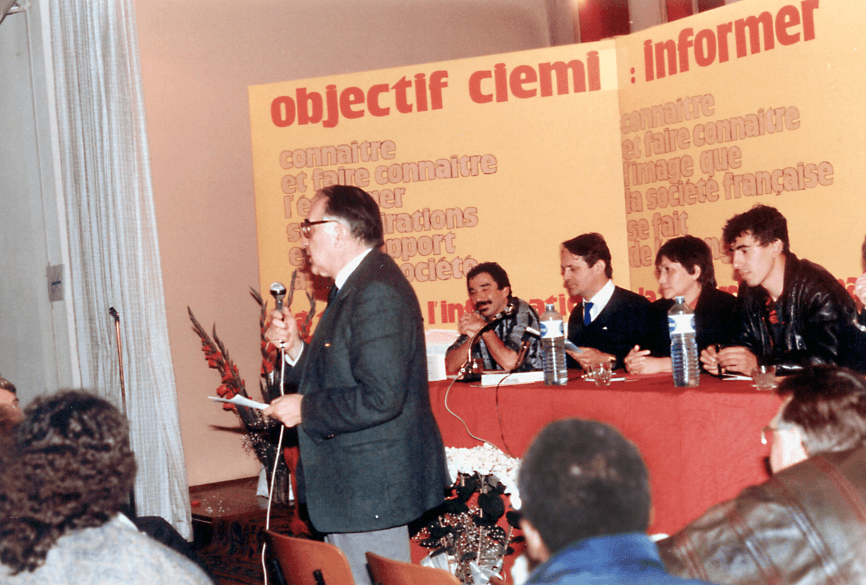
En 1992 et pendant quelques années, le ciemi se dote d’un « conseil d’orientation », dont l’objectif est de diversifier les sources d’information du Centre, de développer ses liens avec les animateurs de terrain et d’évaluer son impact sur la société. Il compte des chercheurs, des journalistes, des fonctionnaires, des représentants des institutions européennes et des religieux, qui analysent la façon dont le Centre est perçu par le public et suggèrent des pistes pour améliorer sa visibilité.
En 1994, les ressources économiques du Centre sont considérablement réduites, les Scalabriniens ne pouvant plus assumer l’intégralité de son budget annuel. Après le départ de Pierre Toulat, la fonction de rédacteur en chef de Migrations Société (dont le nombre de lecteurs et de pages ne cesse de croître) est assurée successivement par Antonio Perotti, Philippe Farine et Lorenzo Prencipe.
En plus des activités documentaires et éditoriales, la nouvelle direction du Centre hérite de plusieurs engagements. En effet, depuis 1990, le ciemi avec l’Institut du monde arabe est partie prenante du diplôme de 3e cycle « Migrations, échanges et développements méditerranéens », créé par l’université Paris-Diderot. Parallèlement, l’association intervient chaque année lors des stages et sessions de formation organisés par les Centres de formation et d’information pour la scolarisation des enfants de migrants (cefisem), siège au conseil d’administration de l’Agence pour le développement des relations interculturelles (adri) et collabore en tant que membre fondateur à la Coordination européenne pour le droit des étrangers à vivre en famille.

Entre 1993 et 1999, plusieurs séminaires, formations et colloques organisés par le ciemi portent sur la « médiation » culturelle dans différents domaines : les associations, les communautés musulmanes, le droit français, l’école, les Églises et le sport. Une autre thématique particulièrement développée au cours des initiatives et interventions ponctuelles du Centre a trait aux « représentations de l’Autre » dans la presse et au sein de l’opinion publique.
Les années 1990 voient la disparition progressive de l’expression « travailleurs immigrés », jusque-là utilisée pour désigner une catégorie particulière de membres de la classe ouvrière, au profit du terme « immigrés », qui se réfère à des personnes ayant désormais vocation à s’installer définitivement en France et dont la présence suscite des questions quant à leur intégration.
Au début des années 2000, l’association propriétaire des locaux qui accueillent le ciemi rénove ses bureaux et la salle de lecture. Ce changement logistique permet une meilleure organisation de la bibliothèque et une augmentation considérable des initiatives sur place. Parallèlement, Pedro Vianna, membre depuis 1991 du conseil éditorial de Migrations Société devient, en janvier 2000, rédacteur en chef de la revue.
Appelé à constituer à Rome le Scalabrini International Migration Institute, Lorenzo Prencipe quitte le ciemi en 2003, tandis qu’en mars 2005 Philippe Farine, âgé de 86 ans, démissionne du poste de président. Ils seront remplacés respectivement par Luca Marin, sociologue, et Vincent Geisser, sociologue et politologue, chercheur à l’iremam (Aix en Provence).
Une expertise en matière de migrations
Depuis 2003, le CIEMI continue de développer la collecte et l’élaboration du savoir sur les migrations internationales, au service des publics les plus divers : étudiants, bénévoles, membres d’associations, fonctionnaires, travailleurs sociaux, services d’Église, enseignants, chercheurs, bibliothécaires, détenus, avocats, etc.
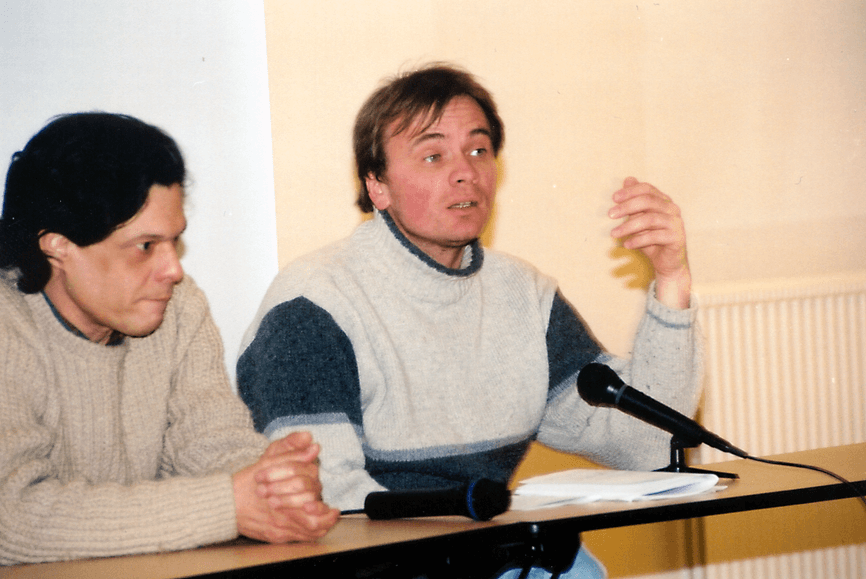
De son côté, la revue Migrations Société prend au fil du temps une nouvelle dimension et élargit l’éventail de ses approches ainsi que le nombre des membres de son conseil scientifique, tandis que le secteur formation reprend ses activités en proposant de nombreuses initiatives sur des thématiques variées : les discriminations basées sur l’origine, le « malaise » dans les banlieues, la religion dans les quartiers populaires, les Roms, le traitement médiatique des questions migratoires, les printemps arabes, l’immigration, l’identité nationale, les catholiques et les migrants, les mineurs isolés étrangers, l’intégration à la française, les descendants d’immigrés, etc.
Parallèlement aux séances de formation thématiques Connaître les migrations organisées depuis 2008, le ciemi collabore avec de nombreux organismes : le CCFD-Terre Solidaire, la Mairie de Paris, plusieurs associations et municipalités françaises, l’Université de Valence (Espagne), le Service national de la pastorale des migrants, etc.
En 2009, le Centre tente de réactiver ses collections d’ouvrages scientifiques sur les migrations, en sommeil depuis 2000, en publiant deux livres. Toutefois, les exigences juridiques et commerciales imposées actuellement par le monde de l’édition, ne lui permettent pas de poursuivre dans cette voie.
À partir de 2014, suite à une réorientation nationale et européenne des politiques d’intégration des étrangers, le ciemi a subi le contrecoup des nouvelles restrictions budgétaires, en dépit des résultats obtenus et de la considération que lui portent plusieurs représentants des institutions publiques et du monde de la recherche.
Fin 2015, Josselin Dravigny succède à Pedro Vianna au poste de rédacteur en chef de Migrations Société, fonction assurée depuis 2021 par Niandou Touré.
Aujourd’hui comme hier, l’une des problématiques auxquelles l’association est confrontée a trait à la circulation de son savoir. C’est l’un des nombreux chantiers dans lesquels le Centre est actuellement investi.
CIEMI - 46, rue de Montreuil
75011 - Paris - France
© Ciemi 2024
Ce site ne contient pas d’annonces publicitaires et n’utilise pas de cookies tierce partie. Aucune donnée relative aux internautes n’est collectée. Pour plus de détails, veuillez consulter la section « mentions légales » située dans le menu « Contact ».
